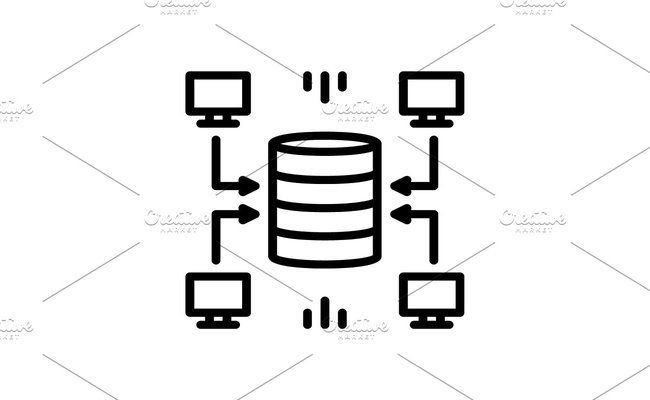Data Warehouse For Modern Managers

In the current generation, companies and customers generate a huge amount of data. Above all, the widespread usage of digital devices is pushing this. This is definitely something to cherish. But the question arises how can we practically manage this data in order to get valuable insights? By 2020, the digital universe will expand to 40,000 exabytes (1 exabyte = 1,000,000 terabytes).
A data warehouse (DWH) is the collection and rearrangement of the diverse underlying area, which is spread across various locations. Essentially, we can assess any observable trend in different datasets. It is important for the modern manager to understand the dynamics of data warehouses in the world of data science, data mining, and business intelligence.
The data warehouse is a centralized repository of digital information collected from different sources and structured in a way that is suitable for reporting. Matter of fact, it provides workable insight into the enterprise, enabling employees to execute thorough analysis and make better decisions.
Key concepts of data warehouse
Relational and dimensional database
You must understand the difference between relational and dimensional databases to comprehend the essence of DWH. Technically, they are easy to compare. The only difference lies in the information flow. While the relational model focuses more on the input quality, the dimensional model optimizes the output. The dimensional model is the form of reports and analytics, called business intelligence.
The relational model arranges information around a single point of information. Let us consider an example. In a grocery store, we take the case of vegetables. Then it will fill up the different vegetable names. Also, the related data like price, date of purchase, and buyer details, in their respective or related blocks.
Whereas the dimensional database is able to fragment information in the relational database. This way one can easily pick and choose data according to their reporting needs. For those dealing with reporting and data analytics, appreciating the distinction between these two models provides essential elementary information about working with technical teams who manage these resources.
It’s On
Bill Inmon, one of the founders of the data warehouse, has defined it as a subject-oriented, integrated, nonvolatile, and time-variant collection of information. While it sounds great, for better understanding, let us understand the meaning in accordance with the anagram “It’s On”.
Integrated: The DWH processes consistent information. In this process, it is important to have consistent naming conventions.
Time-variant: The DWH shows trends. As it collects data over time, it is necessary to plot relationships within the data.
Subject-oriented: A data warehouse is a collection of subject-oriented data and reports. For example, if we take a disease report, we can further look into the number of people affected, vulnerable cities, and growth trends.
Nonvolatile: Once we enter the data, it does not change.
Data warehouse vs Transactional database
The data warehouse differs from the transactional database in various factors. The transactional database is also known as On-Line Transactional Processing (OLTP). Let us have a brief look.
Content: The DWH provides historical data, whereas the transactional database system provides current data.
Volatility: The DWH contains nonvolatile data as discussed earlier. But in the transactional database, data is detailed and changes with several transactions.
Purpose: We prefer a data warehouse for analytics and reporting. For availability and processing speed, you should choose a transactional database system.
Users: Analysts and managers use DWH. Most front-end employees use transactional systems.
Editing: You can only read in DWH, whereas you can both read and write data in a transactional system.
User interaction: It is according to the requirement in DWH. Pre-defined in the transactional system.
Access: You can access millions of records in DWH, but a few records in OLTP.
Focus: DWH focuses on data retrieval. In contrast, OLTP focuses on data writing.
Data warehouse, data mart, and data lake
Related databases like data mart and data lake may come alongside DWH. Each has its own distinct functions.
Data mart: A subset of the data warehouse, data mart usually contains one subject area for one department. For example, varieties of vegetables are imported to the vegetable section of a general store. The data mart is of two types, dependent and independent, each with its own benefits. The dependent data mart relies on DWH for information, and it maintains consistency. While strong, dependent data marts are expensive to develop because of dependence on DWH. Independent data marts access information from relevant data sources. It is like a mini DWH. They carry increased risks, as the data comes from various sources and may be inconsistent. However, if you compile independent data marts with discipline, they can subsequently be combined into a DWH.
Data lake: It is usually worked upon cheap and scalable commodity hardware. It is beneficial as the unwanted data can directly be dumped into the lake. While DWH typically consists of texts and numbers, data lakes hold a variety of data such as images, sensor data, and social media.
Data mining
The data warehouse also enables data mining. The primary purpose of data mining is to identify and obtain patterns in large sets of data. Consequently, it will help in obtaining relationships between data categories and their underlying business functions.
Such relationships provide workable insights to managers, which further act as antidotes to enhance desired business outcomes such as trends in sales and marketing campaigns and customer growth.
Hence, it is vital to understand DWH as a modern manager. I hope you got a gist about data warehouse and related databases after reading this.
